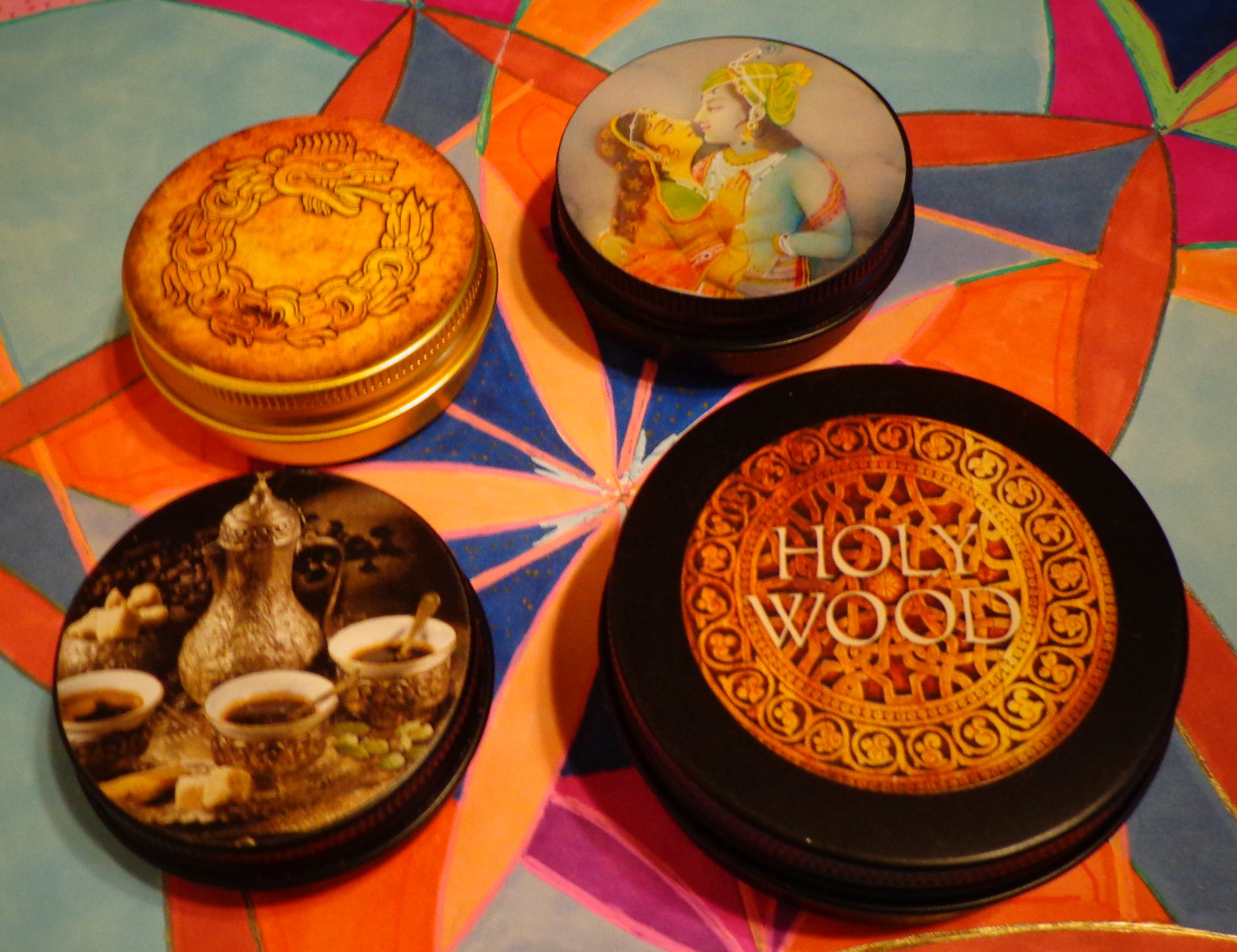 It is particularly difficult in the first half of the year to keep up with the sheer amount of brilliant incense art that both Bonnie Kerr and Katlyn Breene spin out over this period, and it can be hard to get to things before they sell out. Hopefully this guide will be helpful to readers, and there will certainly be a second round up in the (very) near future as Mermade has just released a number of intriguing new scents. The current four I have sat with a bit longer, so I wanted to get my thoughts on them out while you can still go find them.
It is particularly difficult in the first half of the year to keep up with the sheer amount of brilliant incense art that both Bonnie Kerr and Katlyn Breene spin out over this period, and it can be hard to get to things before they sell out. Hopefully this guide will be helpful to readers, and there will certainly be a second round up in the (very) near future as Mermade has just released a number of intriguing new scents. The current four I have sat with a bit longer, so I wanted to get my thoughts on them out while you can still go find them.
First of all, I do have to admit something when it comes to the Espirit de la Nature line and that is they can be very quiet incenses and with my level of domicile incense saturation, maybe some personal age, etc., I often can find it very hard to get the right space to smell these and quantify my impressions. For one thing several of Bonnie’s incenses are recommended to heat at lower temperatures, but I have found I have to really sit right by the heater to even catch the scents and the top levels often still go pretty fast. This may not be the case for everyone and it may also be the warmer weather, but it can be a bit tricky. Of course it’s well worth it because the picture you get would put reducing fractals to shame in their complexity and beauty and I’m always amazed at their almost Zen-like balance.
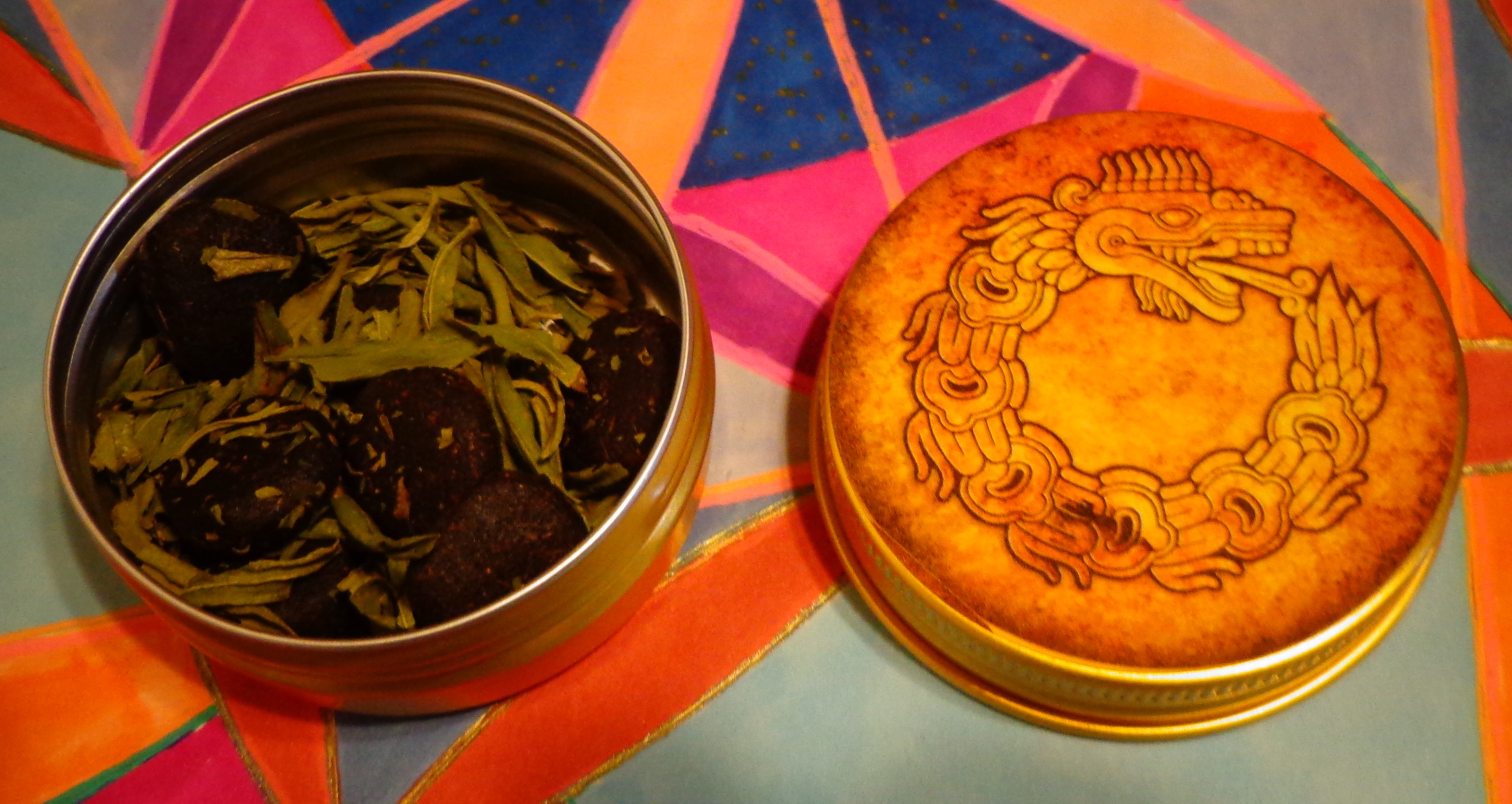 Balsam Coast is probably a bit stronger than the more floral based incenses so the balsam centrality along with a lovely sense of clay and floral in the mix cuts through. The mix is a really impressive and very different South American themed incense that even with the inclusion of palo santo and sweetgrass is actually quite different to the blends that Katlyn creates that are more based on copals. I very much love balsamic qualities in incense especially those that border on ambers and while there is some hints of that here I think this is a very new direction. It sort of dissolves into this almost gooey like marzipan direction with some slight nuttiness in the background by the midpoint that is utterly gorgeous. But the back end of the burn really brings out this sense of clay more with earthier notes more reminiscent of patchouli or vetivert. A brilliant achievement indeed to have that many things going on with one tiny nugget. It is running out quite quickly, there was only one left on Mermade when I checked, so it may be worth reaching out to Bonnie if you miss it.
Balsam Coast is probably a bit stronger than the more floral based incenses so the balsam centrality along with a lovely sense of clay and floral in the mix cuts through. The mix is a really impressive and very different South American themed incense that even with the inclusion of palo santo and sweetgrass is actually quite different to the blends that Katlyn creates that are more based on copals. I very much love balsamic qualities in incense especially those that border on ambers and while there is some hints of that here I think this is a very new direction. It sort of dissolves into this almost gooey like marzipan direction with some slight nuttiness in the background by the midpoint that is utterly gorgeous. But the back end of the burn really brings out this sense of clay more with earthier notes more reminiscent of patchouli or vetivert. A brilliant achievement indeed to have that many things going on with one tiny nugget. It is running out quite quickly, there was only one left on Mermade when I checked, so it may be worth reaching out to Bonnie if you miss it.
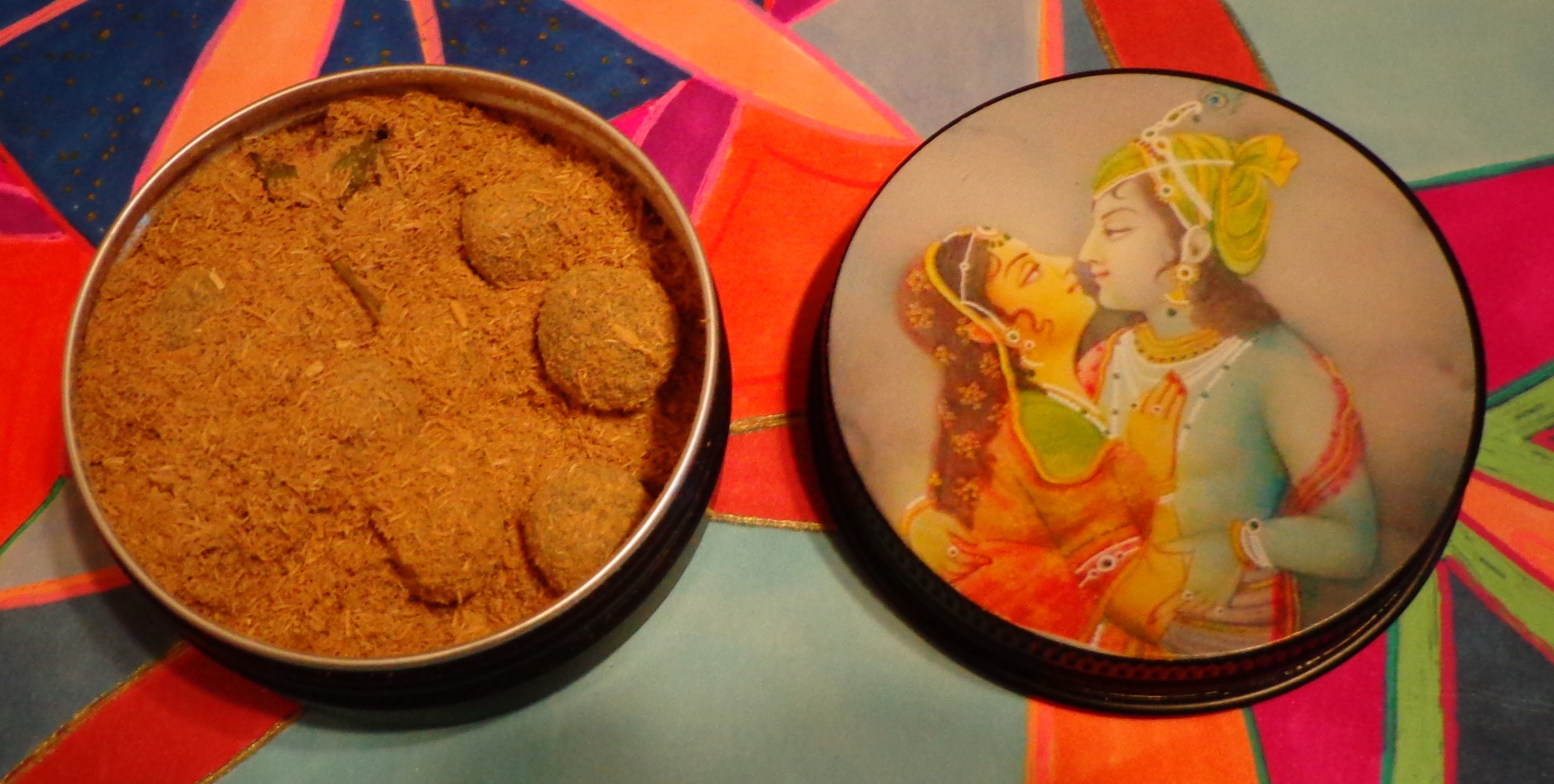 Kama Sutra, however, is like what I alluded to earlier, in order to even get some idea of the scent, I have to sit right next to the heater and bend my head over, it is that subtle (or maybe I have some personal scent blockers in my make up somewhere!) It is an incense that seems largely a vehicle for muskrat musk with a lot of interesting resins and infused resins in a mix. You can definitely tell this is a musk incense, it definitely has that sort of sweet animalic scent you tend to expect, but the question here is how much of it interacts with the rest of the scents to provide what is a lot of almost liquor like notes and even some interesting floral aspects. Part of my difficulty is that this comes off so low that you are almost teased by the incenses subtleties, there’s something kind of new and unknown that actually fuels one’s fascination. And of course one is pulled along by the name to imagine the intent of this was to work more on a pheremonal sort of level (in a way I don’t want to quite spoil what direction I’m thinking in here, but reading the description at the page might give enough clues). Overall though, I tried heating this a few times, but largely struggled to get over the threshold with it at least in terms of how I’d normally analyze an incense. Those with higher intolerances to heavier and smokier aromas might actually find this more to their resolution, but if one thinks a bit more laterally here, this is quite interesting indeed maybe even paradigm shattering. I’d certainly love to imagine more experiments in this direction, it kind of forces one to approach the incense both more intuitively and at the serpent level. Unfortunately in this case the incense had sold out by the time I posted this, so it may be worth checking with Bonnie if you’re interested.
Kama Sutra, however, is like what I alluded to earlier, in order to even get some idea of the scent, I have to sit right next to the heater and bend my head over, it is that subtle (or maybe I have some personal scent blockers in my make up somewhere!) It is an incense that seems largely a vehicle for muskrat musk with a lot of interesting resins and infused resins in a mix. You can definitely tell this is a musk incense, it definitely has that sort of sweet animalic scent you tend to expect, but the question here is how much of it interacts with the rest of the scents to provide what is a lot of almost liquor like notes and even some interesting floral aspects. Part of my difficulty is that this comes off so low that you are almost teased by the incenses subtleties, there’s something kind of new and unknown that actually fuels one’s fascination. And of course one is pulled along by the name to imagine the intent of this was to work more on a pheremonal sort of level (in a way I don’t want to quite spoil what direction I’m thinking in here, but reading the description at the page might give enough clues). Overall though, I tried heating this a few times, but largely struggled to get over the threshold with it at least in terms of how I’d normally analyze an incense. Those with higher intolerances to heavier and smokier aromas might actually find this more to their resolution, but if one thinks a bit more laterally here, this is quite interesting indeed maybe even paradigm shattering. I’d certainly love to imagine more experiments in this direction, it kind of forces one to approach the incense both more intuitively and at the serpent level. Unfortunately in this case the incense had sold out by the time I posted this, so it may be worth checking with Bonnie if you’re interested.
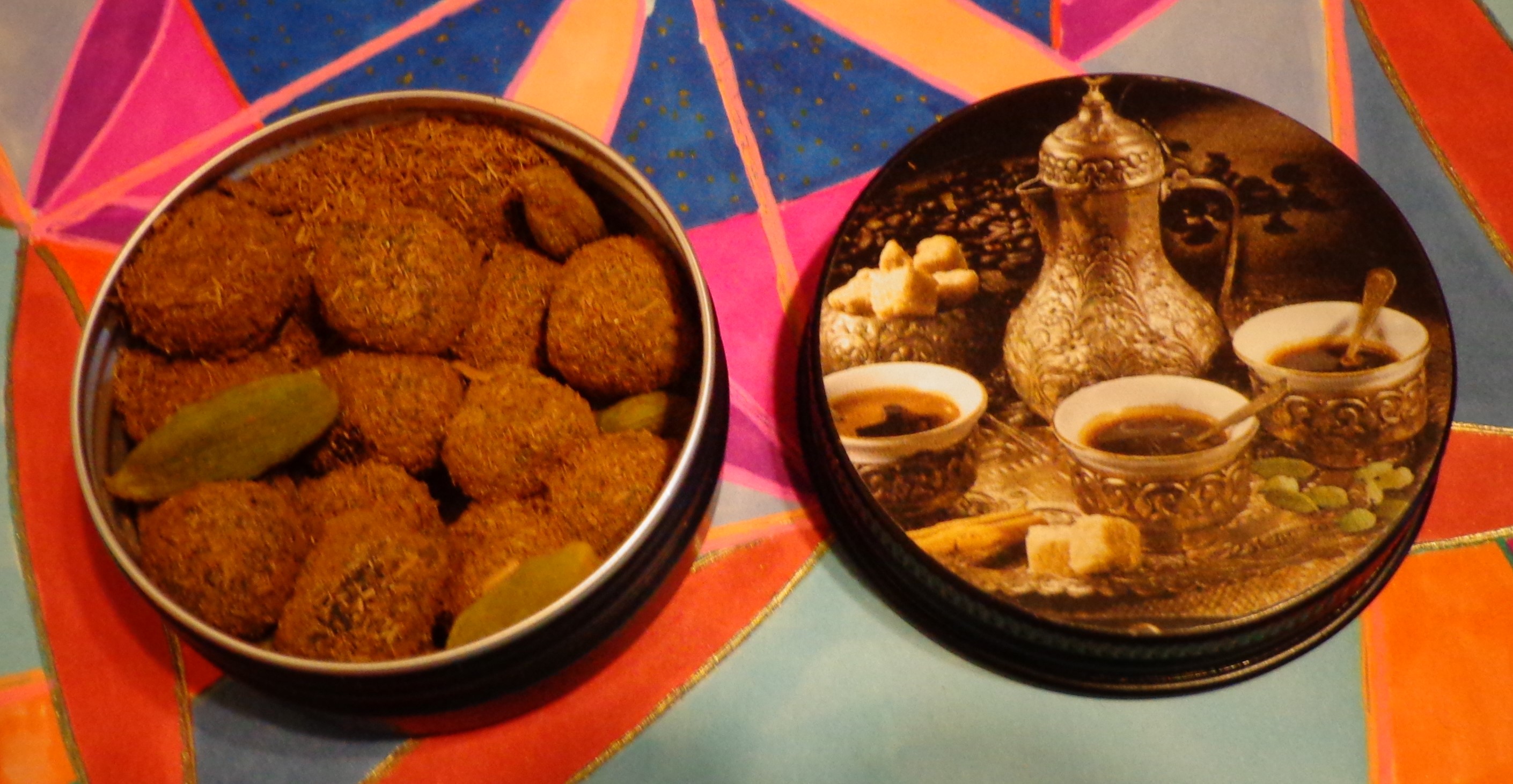 Cafe Arabic attempts something like a mix of coffee and oud. The ingredients listed here start with dark cocoa, and include a blend of Oman frankincense, Tolu balsam, and benzoin; genuine honey tobacco absolute; and agarwood. Mermade explains, “It is bound with raw labdanum resin and specially prepared honey and raisins in calvados. Also, a generous dose of oud was added to elevate this blend, making it a perfect blend for the gourmand and smoke lovers alike.” So in a way one can see this as a sidestep from Mermade kyphis as well as the labdanum experiements of the last few years. Coffee is one of the really difficult aromas to get right in incense. Vedic Vaani, for example, do a few coffees that actually abut on coconut and so the experience is often how does an incense creator move things in that “smell of brewing coffee” direction more. There’s certainly some basis for labdanum, balsam and some aspects of previous kyphis that move in this direction, after all you are kind of looking for a darker sort of scent, but if you’re marrying the coffee with its sweeter cousins in drinks, it gets a bit easier to accomplish. It is fun in a lot of these incenses to see how balsam can be coopted to move in a number of different directions and there is certainly top notes that work well to create a coffee scent. Agarwood and oud also do so in part, and you get that sort of secondary effect of creating something more deluxe with them as well. I tried this out on a couple different heaters to see if I could see how different temperatures volatized this one. I would have thought hotter temperatures would bring out the oud or agarwood more but I was surprised to find the balsamic qualities to be a bit stronger when I turned it up. The coffee is really something of a fleeting top note and the middle is more of a conglomeration of different effects. The honey tobacco absolute in particularly moves this in a sort of harvest-like or summer direction. So in many ways this is something of a chameleon and even though I heated this nearly a half dozen times before I put the review down, it felt like I was still pursing what to say about it.
Cafe Arabic attempts something like a mix of coffee and oud. The ingredients listed here start with dark cocoa, and include a blend of Oman frankincense, Tolu balsam, and benzoin; genuine honey tobacco absolute; and agarwood. Mermade explains, “It is bound with raw labdanum resin and specially prepared honey and raisins in calvados. Also, a generous dose of oud was added to elevate this blend, making it a perfect blend for the gourmand and smoke lovers alike.” So in a way one can see this as a sidestep from Mermade kyphis as well as the labdanum experiements of the last few years. Coffee is one of the really difficult aromas to get right in incense. Vedic Vaani, for example, do a few coffees that actually abut on coconut and so the experience is often how does an incense creator move things in that “smell of brewing coffee” direction more. There’s certainly some basis for labdanum, balsam and some aspects of previous kyphis that move in this direction, after all you are kind of looking for a darker sort of scent, but if you’re marrying the coffee with its sweeter cousins in drinks, it gets a bit easier to accomplish. It is fun in a lot of these incenses to see how balsam can be coopted to move in a number of different directions and there is certainly top notes that work well to create a coffee scent. Agarwood and oud also do so in part, and you get that sort of secondary effect of creating something more deluxe with them as well. I tried this out on a couple different heaters to see if I could see how different temperatures volatized this one. I would have thought hotter temperatures would bring out the oud or agarwood more but I was surprised to find the balsamic qualities to be a bit stronger when I turned it up. The coffee is really something of a fleeting top note and the middle is more of a conglomeration of different effects. The honey tobacco absolute in particularly moves this in a sort of harvest-like or summer direction. So in many ways this is something of a chameleon and even though I heated this nearly a half dozen times before I put the review down, it felt like I was still pursing what to say about it.
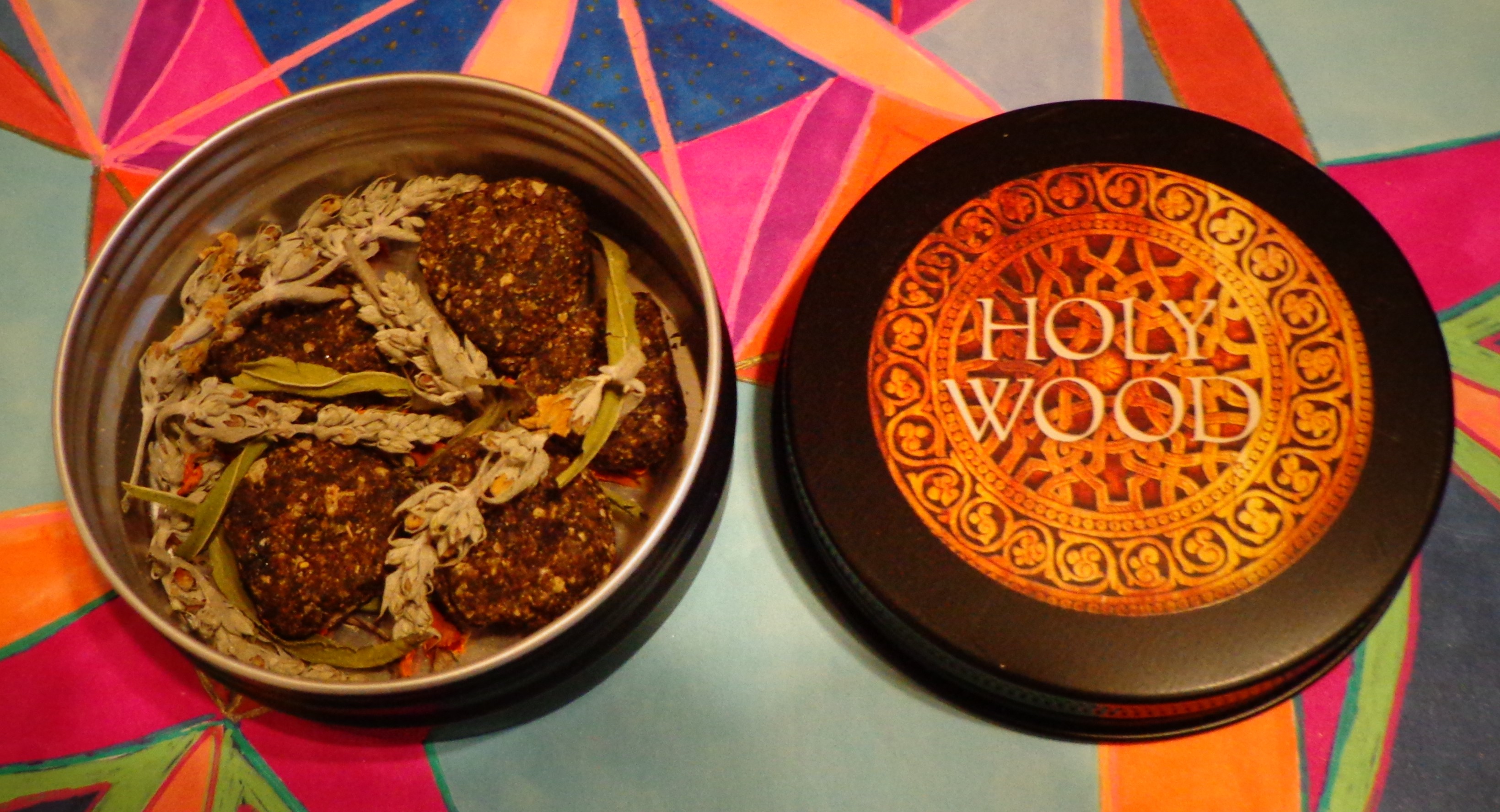 Holy Wood is a real triumph, it might be my very favorite of all of Katlyn’s South/Central American themed incenses so far. If I was to do a real quick rendering of what this is like for me, it’s almost something like a chocolate-peppermint confection. I’m not always a huge fan of palo santo, so the fact that this contours that ingredient to exemplify everything I do like about it really makes this an attractive and powerful incense for me and something of a revelation. All of the cooling, minty aspects of that wood have been drawn out and I think the mix of it with vanilla, honey and balsam manage to combine to give it that confectionary, sweet feel. I’ve mentioned elsewhere that sage can often have some really interesting sweet notes as well and with three kinds you would think that might herbally overwhelm the incense but it just gives it an interesting sense of lateral depth instead. I would guess from the ingredients what gives it a more darker, chocolate-like sense like you might find in the Cafe Arabic is the labdanum resin, mixed with everything else going on it almost feels like some level of molasses to give it a darker, thicker background. It’s wonderfully named as the overall effect is redolent of a shamanic experience, like a deep cooling mist through Amazonian rainforests. Nice to see this one isn’t running out as I review this either, so be sure to add this to any order you might make, it’s that great.
Holy Wood is a real triumph, it might be my very favorite of all of Katlyn’s South/Central American themed incenses so far. If I was to do a real quick rendering of what this is like for me, it’s almost something like a chocolate-peppermint confection. I’m not always a huge fan of palo santo, so the fact that this contours that ingredient to exemplify everything I do like about it really makes this an attractive and powerful incense for me and something of a revelation. All of the cooling, minty aspects of that wood have been drawn out and I think the mix of it with vanilla, honey and balsam manage to combine to give it that confectionary, sweet feel. I’ve mentioned elsewhere that sage can often have some really interesting sweet notes as well and with three kinds you would think that might herbally overwhelm the incense but it just gives it an interesting sense of lateral depth instead. I would guess from the ingredients what gives it a more darker, chocolate-like sense like you might find in the Cafe Arabic is the labdanum resin, mixed with everything else going on it almost feels like some level of molasses to give it a darker, thicker background. It’s wonderfully named as the overall effect is redolent of a shamanic experience, like a deep cooling mist through Amazonian rainforests. Nice to see this one isn’t running out as I review this either, so be sure to add this to any order you might make, it’s that great.
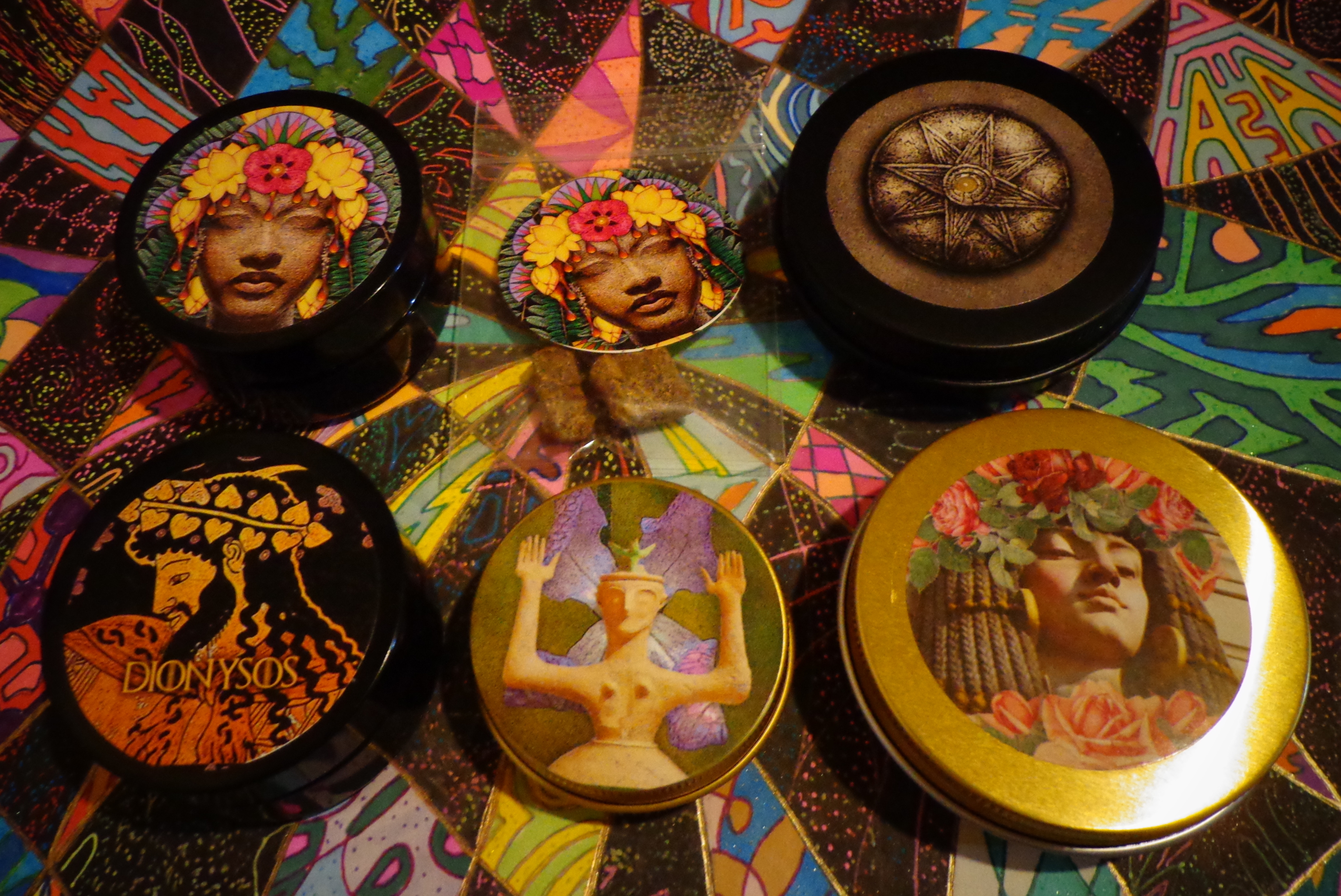 It seems like with the new kyphi mechanism in play that there’s been a substantial creative outburst at Mermade in the winter months. Combine that with ORS being in something of a downtime, it can be really hard to keep up and deeply go into some of these new and wonderful scents that Katlyn has been whipping up in winter months, so I thought I’d do my best to try and do some sort of overview to catch up on some things. As I’ve mentioned before, the catalog window for a lot of Mermade goodies is short and often ORS reviews can shorten them a bit more, and even when I start a review page in draft, I have to keep tabs on what is still live or not by the time I’m ready to publish something. And this too, of course, goes for the Espirit de la Nature incenses that show up. It’s often like watching a car zip by.
It seems like with the new kyphi mechanism in play that there’s been a substantial creative outburst at Mermade in the winter months. Combine that with ORS being in something of a downtime, it can be really hard to keep up and deeply go into some of these new and wonderful scents that Katlyn has been whipping up in winter months, so I thought I’d do my best to try and do some sort of overview to catch up on some things. As I’ve mentioned before, the catalog window for a lot of Mermade goodies is short and often ORS reviews can shorten them a bit more, and even when I start a review page in draft, I have to keep tabs on what is still live or not by the time I’m ready to publish something. And this too, of course, goes for the Espirit de la Nature incenses that show up. It’s often like watching a car zip by.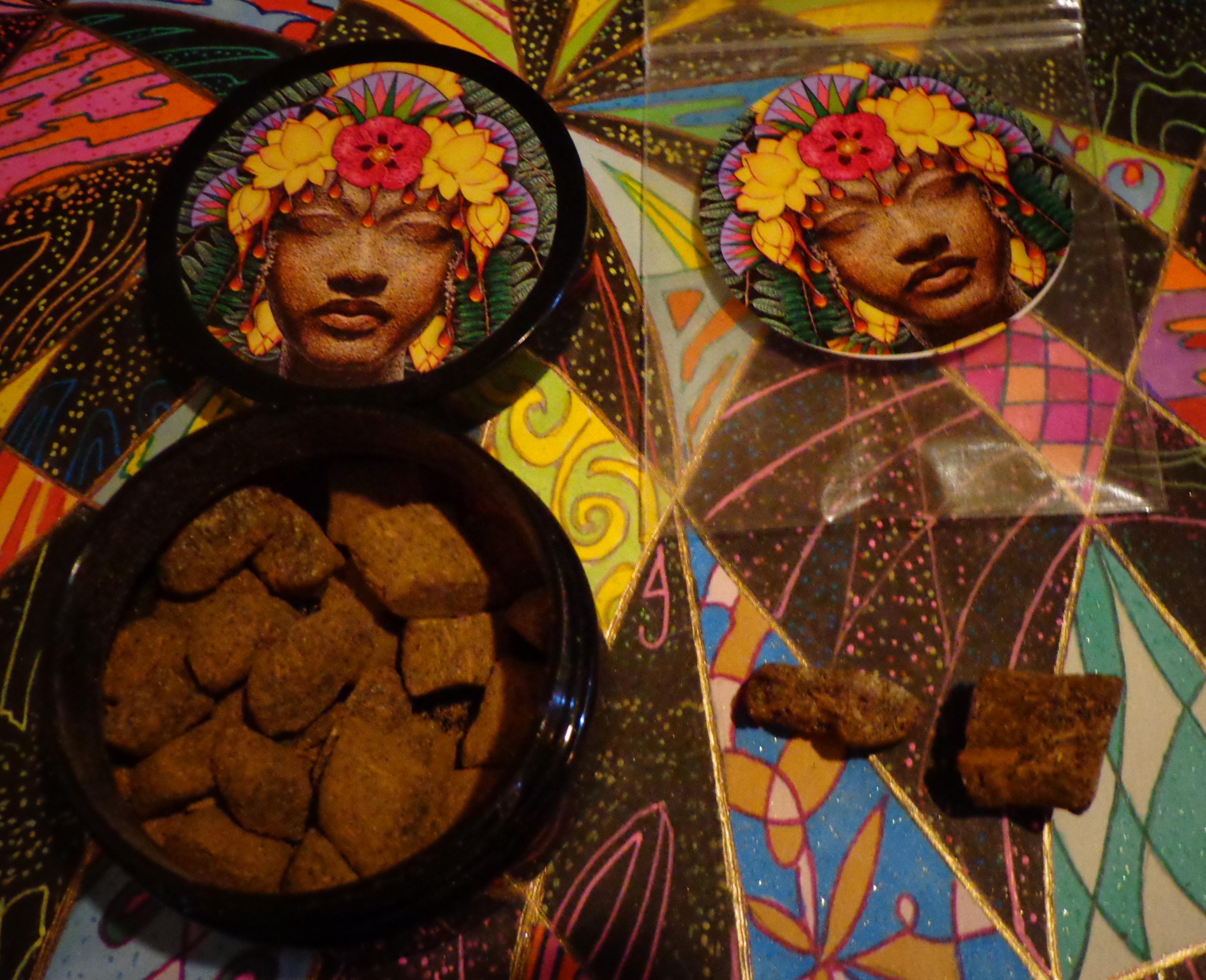 So let’s start with the Mermade kyphis. I covered Kyphi #2, Goddess Temple,
So let’s start with the Mermade kyphis. I covered Kyphi #2, Goddess Temple, 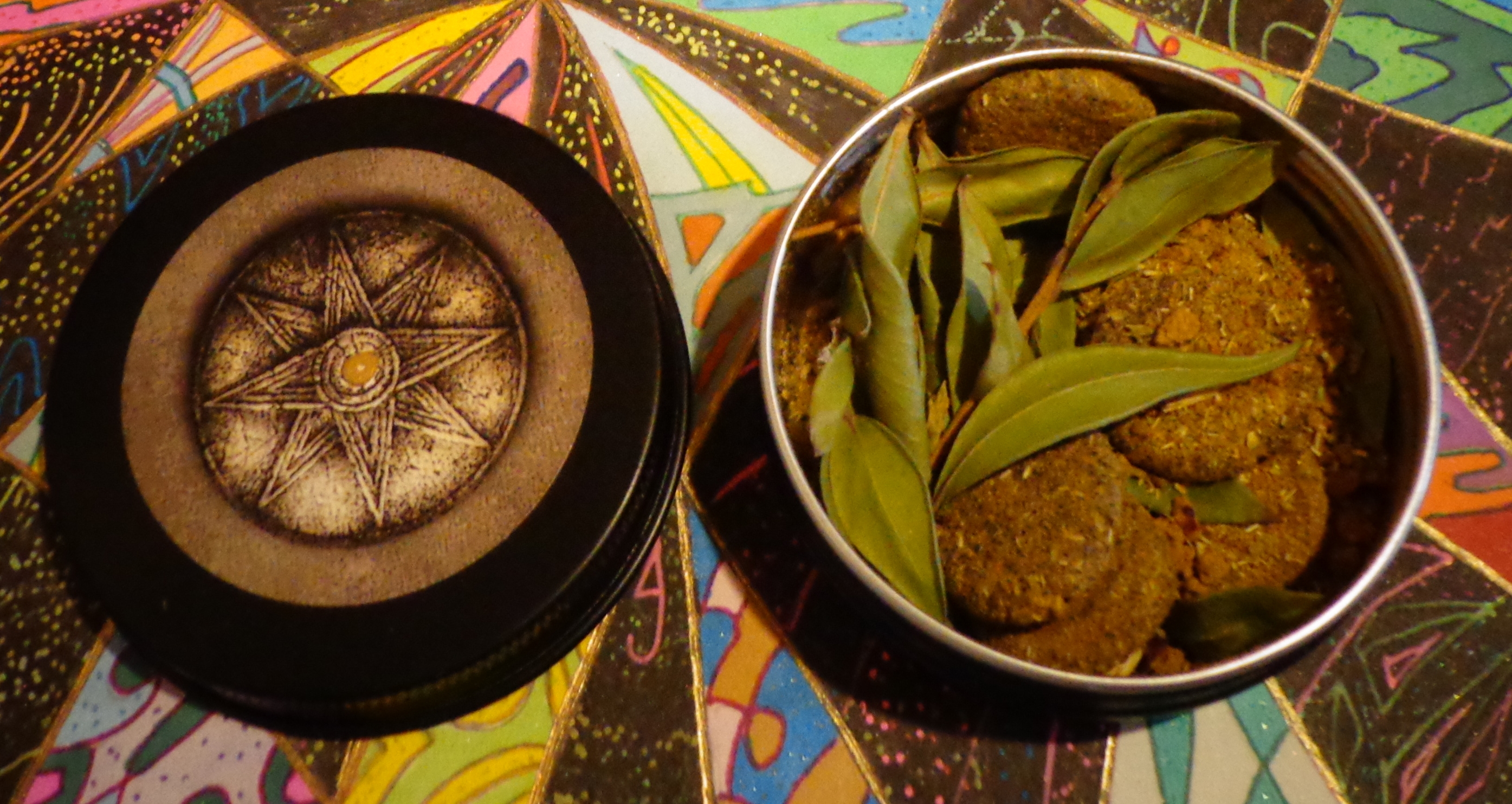 Another project Katlyn is working on is “incense cakes.” There are three different ones that are all very recent,
Another project Katlyn is working on is “incense cakes.” There are three different ones that are all very recent, 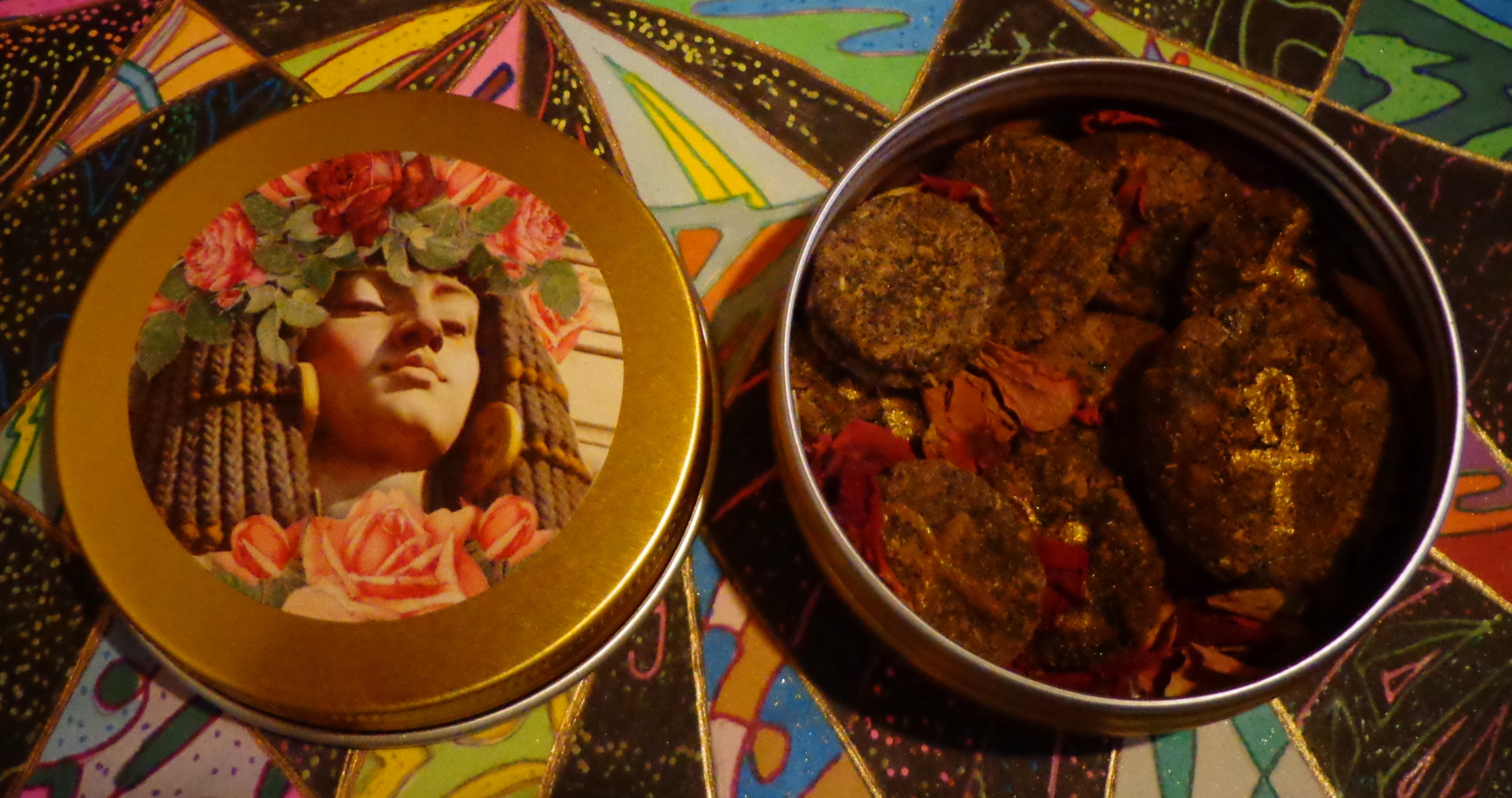 Rose of Isis is a bit more straight forward a blend, with the rose and sandalwood mix out in front. The rose comes from three different absolutes, and the sandalwood is the quality Mysore, but in addition there’s Sahul myrrh, Saigon cinnamon, Hougary frankincense, and benzoin; the mix dusted with agarwood powder. I’ve long understood Katlyn to have a really deep connection with Isis energy and have experienced a number of her crafts in this vein both on and off the market to know she is a vessel for it. The rose here is lovely and powerful, redolent even in the fresh tin, in the way that a friendly rose absolute can lead to it being a bit like valentine’s day candy. But there’s not just that element, but a really genuine scent of the actual rose flower that is paired with that. As the heat continues the rose note will tend to fade into the background more, with the myrrh and cinnamon comng in louder towards the late heat. The sandalwood seems a bit milder than you might expect, mostly due to the powerful rose front, but it tends to tie everything together in the background.
Rose of Isis is a bit more straight forward a blend, with the rose and sandalwood mix out in front. The rose comes from three different absolutes, and the sandalwood is the quality Mysore, but in addition there’s Sahul myrrh, Saigon cinnamon, Hougary frankincense, and benzoin; the mix dusted with agarwood powder. I’ve long understood Katlyn to have a really deep connection with Isis energy and have experienced a number of her crafts in this vein both on and off the market to know she is a vessel for it. The rose here is lovely and powerful, redolent even in the fresh tin, in the way that a friendly rose absolute can lead to it being a bit like valentine’s day candy. But there’s not just that element, but a really genuine scent of the actual rose flower that is paired with that. As the heat continues the rose note will tend to fade into the background more, with the myrrh and cinnamon comng in louder towards the late heat. The sandalwood seems a bit milder than you might expect, mostly due to the powerful rose front, but it tends to tie everything together in the background.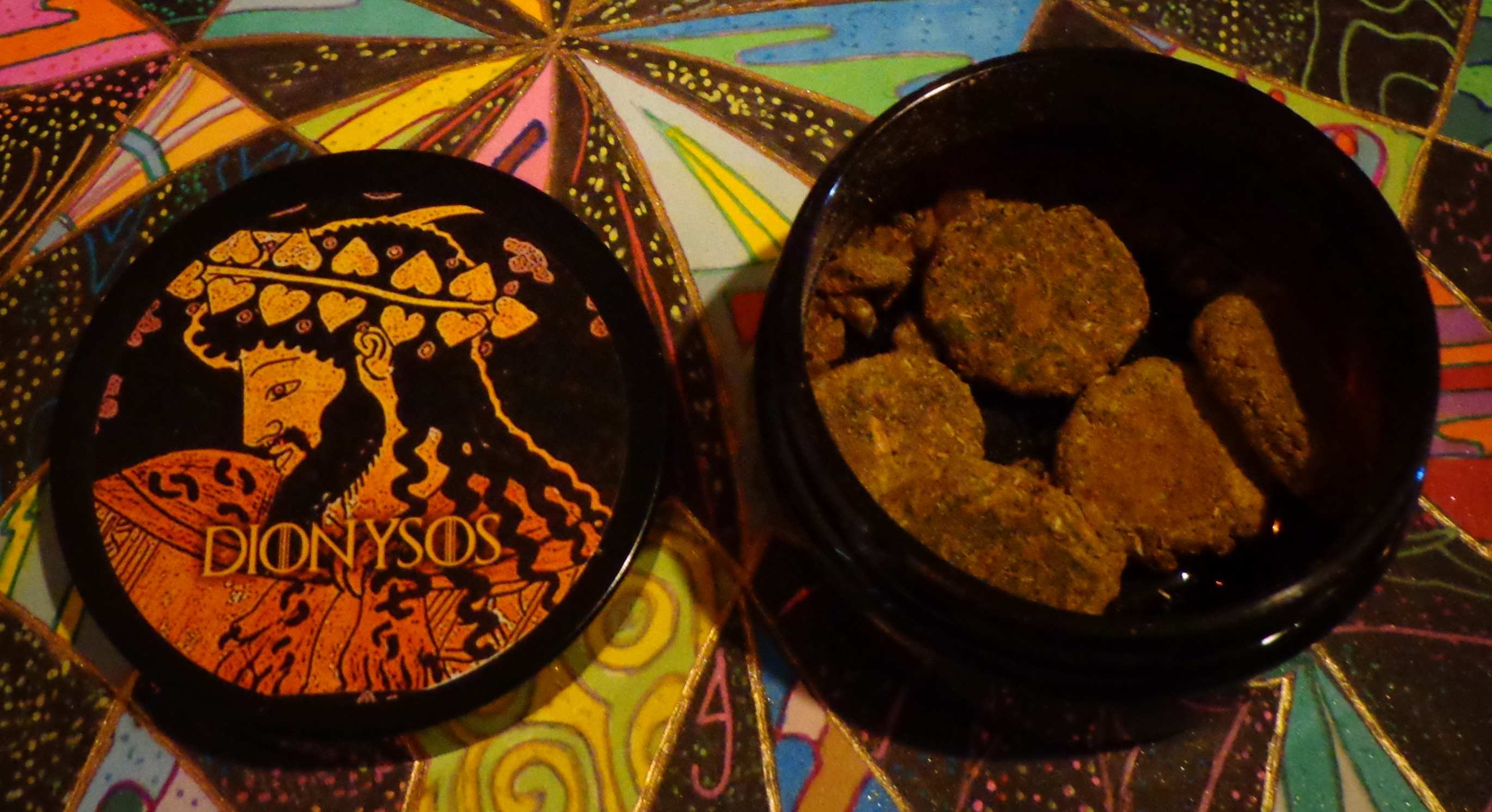 Dionysos is something of an incense cake version of one of Katlyn’s older incenses with the same name. In fact
Dionysos is something of an incense cake version of one of Katlyn’s older incenses with the same name. In fact 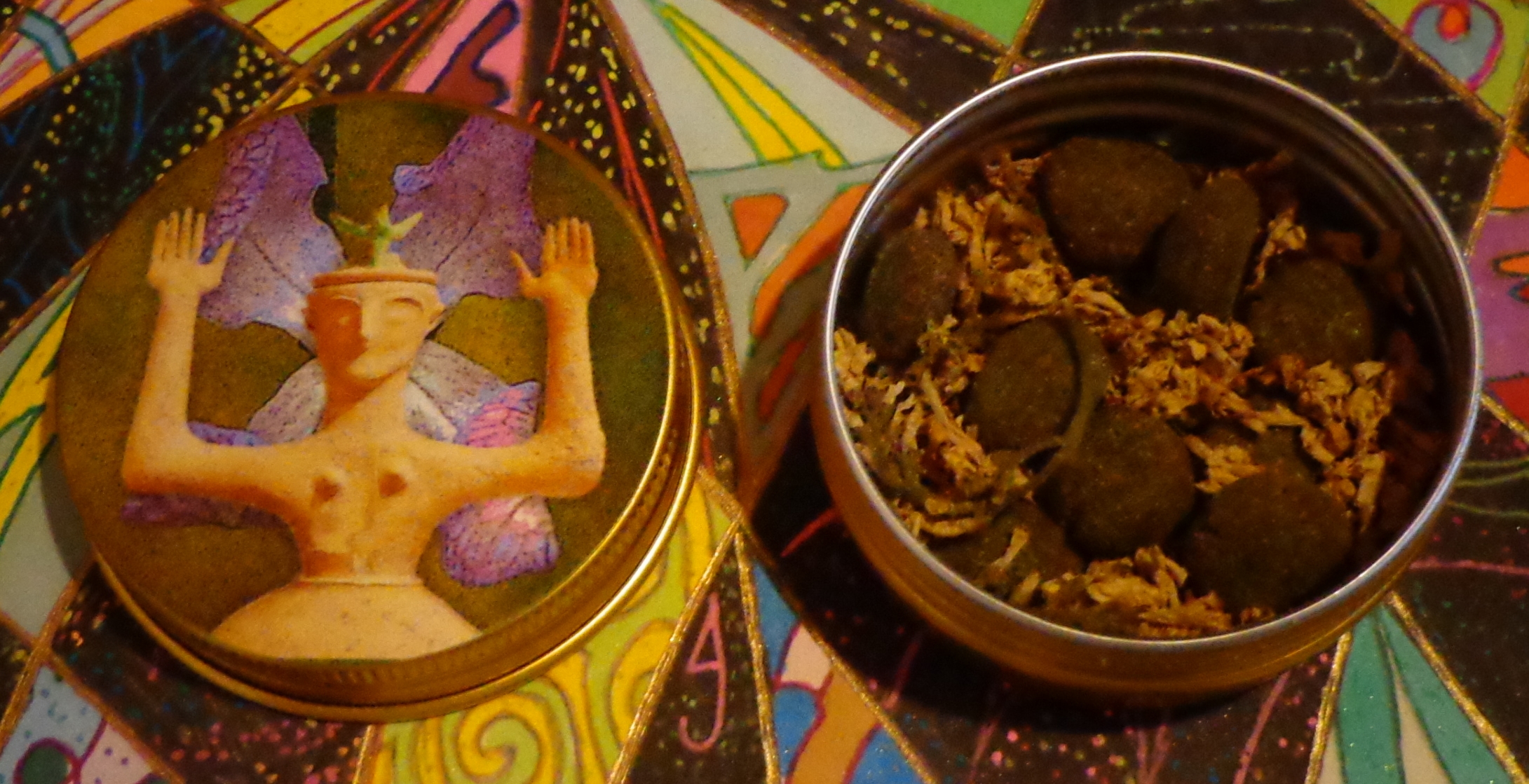 There were also a couple new Encense du Monde incenses in the Mermade catalog of late but one blew out incredibly fast and the other might be gone by the time I get this incense live (3 left! Going, going..). This last one left (well they both were!),
There were also a couple new Encense du Monde incenses in the Mermade catalog of late but one blew out incredibly fast and the other might be gone by the time I get this incense live (3 left! Going, going..). This last one left (well they both were!), 




 I live pretty close to the Sierra Nevadas and have a lot of camping and travel memories of going into the evergreen-rich mountains and the ever-present scent of pine, cedar, fir and juniper. Hikes were always permeated with this higher altitude freshness and some of these were the woods that would end up in your fire at night. And so a lot of these impressions form the basic memories that the most resinous and green Tibetan incenses tend to recall. There are the similarities that trigger those memories and of course the differences that make them fascinating.
I live pretty close to the Sierra Nevadas and have a lot of camping and travel memories of going into the evergreen-rich mountains and the ever-present scent of pine, cedar, fir and juniper. Hikes were always permeated with this higher altitude freshness and some of these were the woods that would end up in your fire at night. And so a lot of these impressions form the basic memories that the most resinous and green Tibetan incenses tend to recall. There are the similarities that trigger those memories and of course the differences that make them fascinating. Both Huiyou and Qinrun incenses are intense evergreen incenses made by the Aba Prefecture in Miyalo Town.
Both Huiyou and Qinrun incenses are intense evergreen incenses made by the Aba Prefecture in Miyalo Town. 
You must be logged in to post a comment.